My last paper described the teaching and learning experiences of a new module I introduced to level 6 students on factual TV. It primarily dealt with the first half of this new module – Informational factual TV programming. Informational programming includes TV genres such as Current Affairs, History and Science TV, and Wildlife TV.
As described in my last post, the module is built around two fundamental premises. The first being that Factual TV programming forms a substantial part of TV schedules, and therefore its popularity, both with producers and audiences, is an aspect of the television experience worth studying. The second premise observes how factual TV, much as with TV drama, has had to develop and change to meet the commercial and cultural demands of a competitive, multi-channel, global TV landscape, and therefore these developments and changes are worth examining as part of an overall examination of change in television.
Both premises have resonance where more contemporary factual TV formats are concerned. In this respect, I am talking about Reality TV and Makeover TV, factual forms which could easily be described as indicative or representative of the TVIII/TVIV era. For most students taking this module, the opportunity to study Reality TV was part of the attraction. It is a form that is very familiar to them, and one which they think they know, largely because they are the sort of TV programmes they watch. Over the years, whenever I asked students what they were watching, most students tentatively ‘admitted’ to watching Reality TV. This tentative response was due in large part to the dominance of TV fiction in the teaching and learning of television studies. Students felt they couldn’t really discuss Reality TV, or Makeover TV because a. It wasn’t on the curriculum; and b. Because of a stigma attached to these sorts of programmes. Both this dynamic of television studies, and realising that students watched popular factual TV influenced the decision to create a module dedicated to factual TV.
Both Reality TV and Makeover TV came under the description of ‘Observational’ formats – Observational documentary, Docusoaps, Reality TV, and Makeover/Lifestyle TV. As such, students introduction to Reality TV and Makeover TV started with lectures on Observational TV documentary.
Observational TV Documentary and Docusoap.
For some critics, the origins of more contemporary Reality TV programmes can be found in Observational TV documentaries. Observational TV first became prominent in the 1970s, with landmark programmes such as An American Family (PBS, 1973), in the US, and its British version of the same concept The Family (BBC, 1974).These programmes were influenced by the ‘Direct Cinema’ movement of the 1960s, and were characterized initially by filmmakers’ desire to directly capture reality and represent it truthfully. As Murray (2004) observed, in her study ‘I think we need a new name for it”: the meeting of documentary and reality TV’, ‘Observational documentaries tend to concentrate on the mundane, every day, and personal, and as a result, can appear just as obsessed with the intimate as reality TV.’
Students were challenged to identify how these original observational documentaries differed from more contemporary Reality TV programmes. For a start, traditional Observational TV programming saw itself as a serious social experiment. Unlike Reality TV, traditional forms of Observational TV were seen by audiences and critics alike as functioning ‘for the greater good of the subject, viewer, and society at large.’ (Murray, 2004). In fact, the idea that observational TV documentaries, such as The Family, could have any resemblance to more contemporary Reality TV programmes has been met with a fierce response by The Family’s producer and creator Paul Watson. Often described as the ‘Father of Reality TV’, Watson, also the producer of Australia’s ABC Observational programme Sylvania Waters (1992) has described Reality TV as ‘trashy’, seeking ‘merely to titillate, shock and gain notoriety by brutalising and denigrating its subjects. That is the extent of its intellectual vigour.’ (Daily Mail, 2008).
Debates around these two types of programmes therefore focused on how ‘factual’ and ‘reality’ are value-laden terms because of their association with ideas of truth, authenticity, information, and entertainment values. In the observational TV documentary, The Family, familiar criticisms, usually applied to contemporary Reality TV, arose. A key example of Observational documentary’s ‘domestic gaze’ The Family has been described by Holmes as ‘a landmark text in the transformation of ‘ordinary’ people into stars’. (2008, p. 195). Although intended to be an honest, objective observation of a normal family The Family became more a film about them contending with the pressures of television. The project revealed trends that would become central to more entertainment-oriented formats such as Docusoaps and Reality TV
As Holmes observed, the concept of achieving fame from a documentary context undermined the fallacy that the camera can simply observe, rather than necessarily reshape, the identity of its subjects.’ (2008, p. 202)
Further debates also examined how both forms, via their production techniques, such as selective editing, include manipulation and interventionist elements raising more ethical concerns.
The truth is, as with Reality TV, Observational documentary has always raised concerns. Are they a serious search for truth, or are they promoting voyeurism as a form of entertainment? Since the 1990s, as with most forms of factual TV, Observational documentary on TV has moved more towards entertainment values. The rise of the ‘Docusoap’ format has seen the Observational mode move away from the project of TV as a social experiment, and more towards a ‘tabloid culture’ where high audience ratings are all important. It is with this element of high audience ratings, necessary for survival in a competitive global TV landscape, and with the inclusion of entertainment values, where the evolution of both Observational documentaries and factual TV are most easily explained.
As Bruzzi explains, ‘Observational documentary has not been rendered obsolete by the advent of more interactive and reflexive modes of non-fiction television… Instead, what has occurred is an evolution.’ (2006, p.120).
The evolution of the form, in all its permutations, ‘remains recognisably ‘observational’, whilst incorporating many of the tactics and devices of its so-called interactive, reflexive and performative successors.’ – such as its immediate off-shoot, the Docusoap, and its recent incarnation in the form of Reality TV.
Although students were not so familiar with the traditional Observational documentary form, they recognised the issues and debates that have surrounded these programmes. However, students were familiar with the Docusoap, even if they saw the form as interchangeable with Reality TV. It is with the Docusoap where the relationship with Reality TV becomes more familiar. Although popular in the late 1990s, the form went out of fashion for a while, but programmes such as the enormously popular One Born Every Minute (Channel 4, 2010-) and The Yorkshire Vet (Channel 5, 2015-), amongst many others, has seen a resurgence of the form. Docusoaps offered new subjects, new relationships with those subjects, a new visual system (both framing and editing), new forms of narrative construction and a novel place in the schedules. The characteristics that have come to represent the docusoap and reality-based sub-genres of observational documentary are their emphasis on entertainment, and the importance of personalities who enjoy performing for the camera. Docusoaps also show a technological change and development in factual programming, technical developments that have had a profound impact on Reality TV.
As John Ellis has observed, here for CST, ‘fixed rig production is the result of a complete rethinking of factual and documentary television. Both production logistics and the negotiation of consents have changed substantially.’ (2015). Fixed rig production, and the incorporation of surveillance technology -originally the defining feature of Reality TV, most notably in Big Brother (Channel 4/5, 2000-2018) – has had both a profound technical and creative impact.
It would be fair to say that a whole module dedicated to these and other aspects of Observational/Reality TV alone would still leave much to discuss. It was important for students to realise that Reality TV has emerged from a wider shift in television and through developments in observational TV as a whole.
For the lesson on Reality TV itself, the difficulty was what to exclude. With so much ground to cover, and so many examples to cover, the aim was to show evolution/developments of the form, and then raise salient issues surrounding the form. For the former, I used Misha Kavka’s Reality TV (2012), and her discussion of ‘First Generation, Second Generation, and Third Generation’ Reality TV. First generation Reality TV – described also by Kavka as ‘the camcorder generation’ – examined how Reality TV evolved from Docusoaps into examples such as Cops (Fox, 1990-2013). These sorts of programmes repeatedly promoted how the everyday is equal parts banality and conflict. They had low production values, low tech, high emotions, cheap antics and questionable ethics.
Second Generation Reality TV – described by Kavka as ‘the competition generation’ – starts with Big Brother and Survivor (CBS, 2000-). These shows introduced the ‘game show-type competition under conditions of surveillance in a contrived setting.’ (Kavka, 2012, p.9). This second generation of reality TV worked by placing surveillance technology within the framework of competition. These second generation shows evolve and become redefined over the years in terms of the personal challenge. Participants are provided with or take advantage of opportunities for self-improvement and self-transformation and present a potential model for later Makeover TV programmes. Interestingly, this is the generation of Reality TV shows my students grew up with. Reality TV becomes synonymous in the popular imagination with elimination, eviction and ‘voting off’ and ‘Ordinary’ individuals are placed in a competitive environment so as to heighten the drama of their ordinariness.
For Kavka, Third Generation Reality TV is also described as the ‘celebrity generation’ and includes those show in the present day. For Kavka ‘Reality television has entered upon a third generation, which marks the shift from a focus on ordinary people to a concern with the mechanisms of celebrity.’ (Kavka, 2012). Whilst reality TV has always been involved in manufacturing celebrity (from ordinary to celebrity status), more recent shows have become a means of exploring contemporary celebrity and how it is produced, maintained, and consumed. Reality TV now self-consciously functions as part of a celebrity-making process in shows such as The X-Factor, but they also focus on celebrity as a life-style. Further, existing celebrities use Reality TV to look both ordinary and special.
With regard to salient issues surrounding the genre, I used a variety of sources from Murray & Oullette (2004), Biressi & Nunn (2005), Holmes & Jermyn (2004), and in particular, Skeggs and Wood’s Reality TV and Class (2011).
Interestingly, by leading up to Reality to TV through developments in ‘serious’ observational documentary, students were much more prepared to be surprised by and exposed to ideas they had not really considered where Reality TV was concerned. They were much more aware of Hill’s observation that ‘Reality TV is a catch-all category that includes a wide range of entertainment programmes about real people…located in border territories, between information and entertainment, documentary and drama.’ (Hill, 2014, p.2). The enthusiasm of students for studying Reality TV was matched only by their amazement at the amount of serious and varied academic writing on the genre. Students also came to realise, with some frustration, Holmes and Jermyn’s observation that ‘Reality television ‘defies precise definition’ (2004) because it shares generic conventions with other genres.
In terms of the overall aims of the module – the two fundamental premises for its existence in the curriculum – Biressi and Nunn’s observations are pertinent here. They describe how, ‘Reality TV altered the terrain of factual programming… establishing new priorities for programme makers and different expectations in viewers.’ (2005, p.2). Reality TV describes a radically altered cultural and economic setting in television (TVIII/TVIV Era). It describes ‘the erosion between the public and private sphere, between the private citizen and the celebrity, and between media and social space.’, and therefore, the study of Reality TV, and its developments, offers both a television history, and a contemporary object.
From Reality TV the module moved to Makeover/Lifestyle TV. This genre provided the most surprises. Students found the theory, and the social and cultural significance of the genre surprisingly interesting and important in relation to the development of factual TV. One student (Sara Heritage), who has since contributed to CST, wrote one of the best undergraduate theory essays I have ever read.
The concept of the ‘makeover’ has become a ubiquitous cultural phenomenon. The popular idea of reinvention has found its way into every aspect of our social world, but more especially on television. The idea of ‘reinvention’ is key to Makeover TV and as Lewis (2013) observes, ‘The makeover television show [is] a mode of programming that only emerged on primetime television relatively recently.’ As such, there has been an explosion of lifestyle makeover television shows with ‘audiences around the world being urged to ‘renovate’ everything from their homes to their pets.’ (Lewis, 2013, p.1).
While makeover TV often stylistically borrows from the reality TV format the two genres are quite distinct. Makeover TV is relatively cheap programming that is easily franchised, and as such, it makes for perfect 21st factual TV with the added value of entertainment values. In fact, the emergence of reality makeover/lifestyle formats can be viewed as an effect of the increasing competition and deregulation of the television market where factual TV is concerned.
In terms of academic interest – why study makeover TV? – Lewis makes the point how makeover television, “concerned as it is with targeting, transforming, and optimizing every aspect of ordinary people’s identities and lifestyles, represents an especially rich site for understanding the shifting dynamics of selfhood and cultural value today.’ (Lewis, 2013, p.1). Further, makeover and lifestyle formats tend to be associated with times of relative uncertainty and social fluidity where people look to popular forms of advice, such as magazines, manuals, and TV for guidance and a sense of assurance. As Lewis observes, ‘The domestic and personal concerns asked by makeover television – far from being trivial – go to the heart of a range of questions facing late modern societies.’ (Lewis, 2013,p.1).
The makeover format has also given rise to a particular type of TV personality. Although the style, mode of address, and audience for these shows varies considerably, all of these makeover programs heavily rely on the figure of the expert or (often, self-proclaimed) ‘Guru’. Where the makeover show departs from the reality TV format is in its focus on lifestyle advice, and the provision of expertise from the resident Guru or expert. ‘Ordinary’ people and ordinary lives are transformed often at the hands of gurus and experts. ‘The lifestyle expert, or Guru, plays ‘a strongly pedagogical role by authorizing certain models of social identity and “good” citizenship.’ (Lewis, 2007); the obvious example being the popular TV show Queer Eye, where participants, or ‘makoveree’ are guided by not just one but five ‘Gurus’ in their televised transformation.
Once aware of what constituted a makeover show, students were more than willing to share their knowledge and experience of these shows. Once aware of the serious academic writing and research on the form, students were willing to engage with these types of programmes in a more serious manner.
Both Reality TV and makeover TV have become strong features of the TV schedules, and as such they are worth examining in more detail. Further, most of my students are also studying TV practices and usually their first forays into working in TV are on shows that belong to these genres in one form or another. As Lisa Taylor notes (2002, p.489), ‘while lifestyle makeover programmes have to some extent displaced sit-coms and dramas from primetime television, they have also borrowed the main ingredients of that programming – drama, conflict, emotion, and stereotypes.’, and therefore the study of both fictional and factual forms in television is important.
Kenneth A Longden is a Lecturer in Television and Media, University of Salford, and a Fellow HEA.


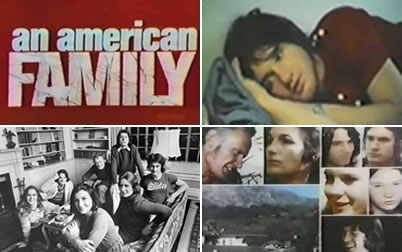
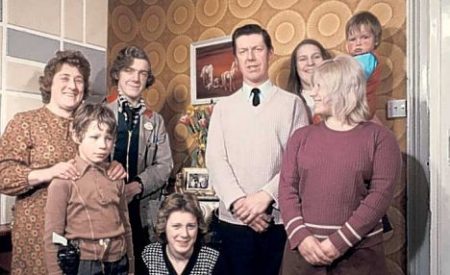
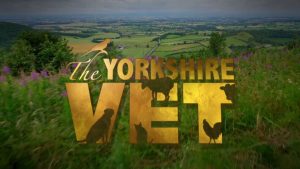


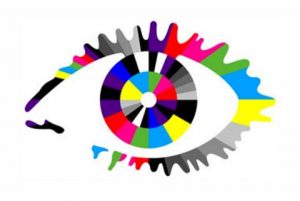
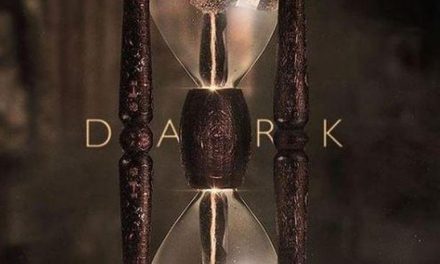
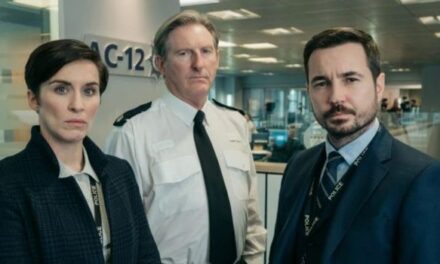
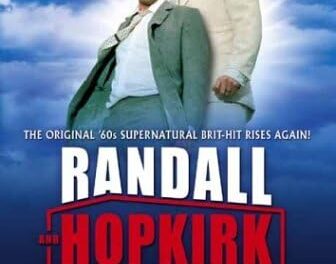

Lovely piece Kenneth! I love that students are discussing this sort of television. Indeed, when it comes to watching archival material, we often find that it’s factual programmes that are the most interesting – partly because of what they convey (through whatever the understanding of that subject was at that time) and also in terms of how they conveyed it with the television technology and styles of the time. It’s one of the reasons that I enjoy HE Cooper’s blog so much because she covers these sorts of programmes.
And the boom of reality television has been amazing. While it’s not one that we watch a lot of, we like to see regular examples and understand what it’s doing and how it does it… and what the trends are.
In terms of how “The Family” ended up showing how the Wilkins contended with dealing with television itself and how it changed them, I rather wish that “The Eric Giddings Story” from the 1967 “A Series of Bird’s” still existed – this started as a documentary about the life of an unemployed man, but when this proved successful and the BBC wanted a series, the BBC had to employ the subject in his capacity as an unemployed man to make it.
I’d not thought much about the ebb and flow of the different types of programme happening around me – so reading something like this which puts it in a bit more context is rather lovely. And the notion of the different generations of the genre was new to me; many thanks!
So delighted that it’s worthy of study. Nice one!
All the best
Andrew